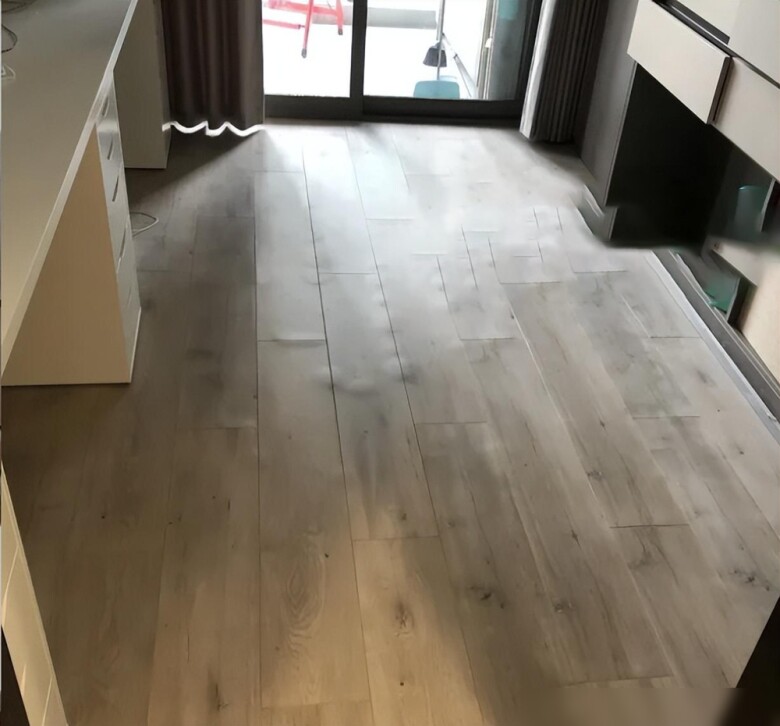More and more people are opting to forego traditional wood and ceramic tile flooring in favor of a new type of flooring called “self-leveling floors.” This innovative flooring option offers numerous advantages, making it a popular choice for many.
Why is wood flooring no longer the top choice for many families?

Wood has been a longstanding building material in Vietnam. However, as modern home design evolves, there is an increased focus on aesthetics, not just in space arrangement but also in the choice of materials.
Among the myriad construction materials available, wood imparts a natural and cozy ambiance, aligning with the design principles of contemporary homes. Additionally, wood can enhance indoor air quality, a crucial consideration amid the escalating air pollution that poses health risks to family members.
Nevertheless, wood flooring has its drawbacks. It tends to be more expensive than many other materials, and installation costs can also be steep. Wood is also sensitive to moisture, prone to warping or swelling if not properly treated and maintained, especially in high-humidity areas like kitchens or bathrooms.
Repairing scratched or damaged wood floors can be intricate and costly, sometimes requiring the replacement of the entire affected area. While wood surfaces offer excellent slip resistance, they can become slippery when wet, increasing the risk of falls. Lastly, certain wood types may fade over time with prolonged exposure to sunlight, diminishing the floor’s aesthetic appeal.
What about ceramic tile flooring?

Ceramic tile flooring is a traditional choice that boasts advantages such as water resistance, stain protection, and ease of cleaning. However, the installation process can be intricate and labor-intensive.
To achieve a beautiful and properly installed tile floor, you first need to clean and level the concrete base. During the installation, a utility knife is used to cut the tiles to the required size and shape, which are then laid down and tapped with a rubber mallet to ensure they adhere evenly to the cement mortar.
Once the mortar dries, the entire surface must be cleaned. Given the intricate installation process, one might question whether it is worth the effort. Despite being touted as slip-resistant, ceramic tile floors can become slippery when wet, especially in high-traffic areas, posing safety hazards.
Why are more people opting for “self-leveling floors”?
Self-leveling floors are designed to create a smooth and even surface without the need for complex base layers. Instead of installing individual tiles or planks, self-leveling floors typically use a liquid mixture, often consisting of cement or polymer, which self-levels and self-smooths when poured onto the surface.
Compared to traditional wood and ceramic tile flooring, self-leveling floors offer superior benefits. One of the most notable features is the seamless surface, free from gaps, creating a more aesthetically pleasing and modern appearance. This seamlessness also contributes to a smoother surface, reducing dust accumulation and facilitating easier cleaning.

Additionally, self-leveling floors excel in water resistance and moisture protection. Even in humid conditions, the floor remains unaffected thanks to the use of high-quality polymers, which prevent shrinkage and cracking. Moreover, this material inhibits the formation of air pockets, mitigating moisture-related issues.
The installation process for self-leveling floors is highly convenient. Leveraging modern technology, it requires minimal water saturation as long as the base is waterproof. This ensures the floor’s stability and longevity. With these advantages, self-leveling floors are the ideal choice for the modern living spaces of many families.

































